The term “jowls” is a broad term used to describe the appearance of a poorly defined jawline. Despite the fact that jowls are commonly associated with facial aging and sagging skin, many younger people come into our office complaining of having jowls. Since the market is flooded with “miracle” solutions, there is considerable confusion about how to improve the jawline. I’ll talk about how I help my patients improve the appearance of their jawlines.
My approach to jowls began with surgical procedures such as liposuction for better jawline definition, and a full range of face and neck lift surgeries. In addition, I routinely placed chin and pre-jowl implants for this purpose. This understanding of deeper facial anatomy has served as the foundation for the evolution of my approach to using non-surgical solutions to treat jowls.
In my practice, patients come in seeking procedures that they learned about online, or from friends who may or may not have had the procedure they seek. I explain to them that understanding the anatomical basis for their appearance is necessary before discussing treatment options. Large-cap companies with large marketing budgets can effectively persuade consumers that their product is novel and, of course, superior to all others. Scientifically, this is rarely the case. So let’s begin by learning about the anatomy of jowls.
What are Jowls?
As previously stated, the term “jowls” refers to a lack of a distinct and well-defined jawline. This is commonly caused by a lack of relative bone density, excess fat below the jawline, and sagging skin. There are instances when one or more of these anatomical issues are present at the same time.
When it comes to relative bone deficiency, there are several areas of the bone known as the mandible where this deficiency can occur. These include the chin, also known as the mentum, the jaw angle, and an indentation known as the mandibular notch. The cause of this deficiency can be familial, inherited essential characteristics, or aging.
Contrary to popular belief, which focuses on skin changes associated with aging, declining bone volume has a greater impact on your appearance. Bone volume loss has a greater impact on the jawline than skin sagging in your 40s to 60s, depending on your genetics.
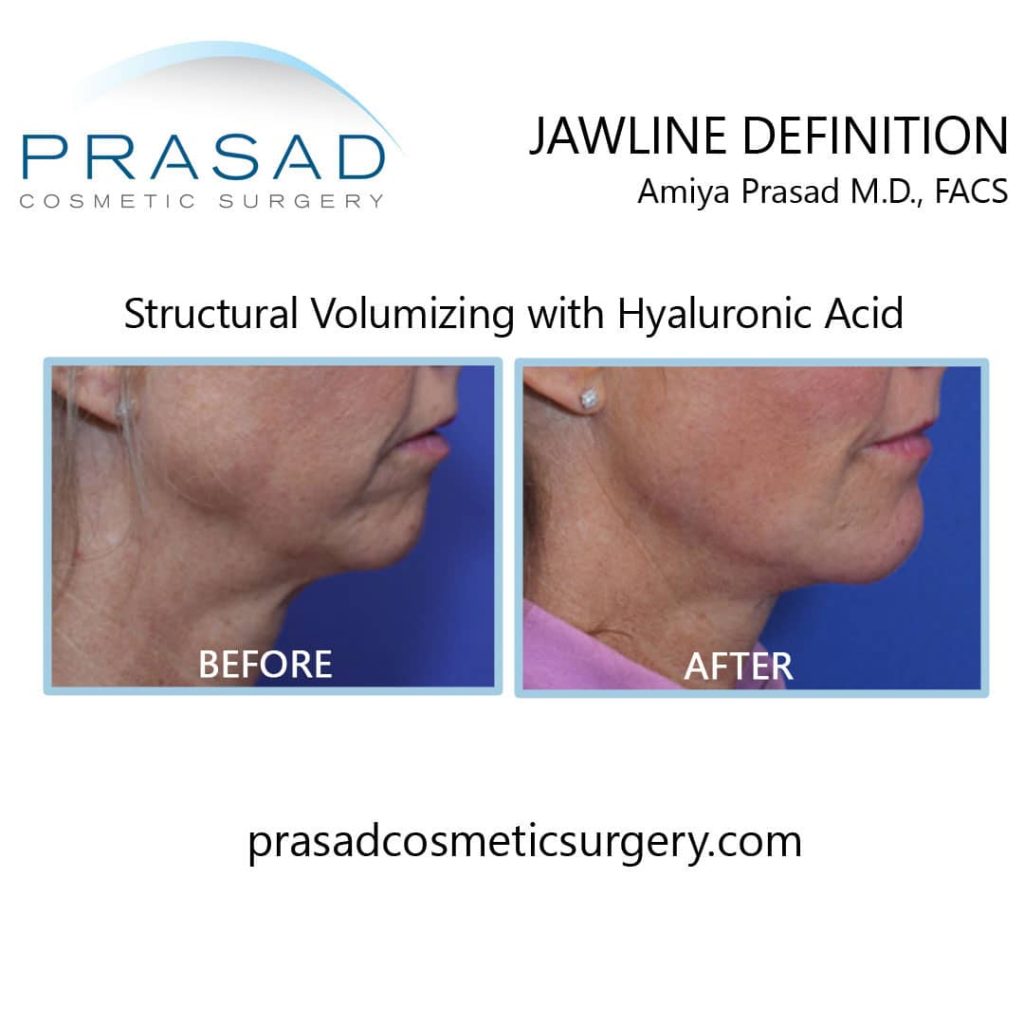
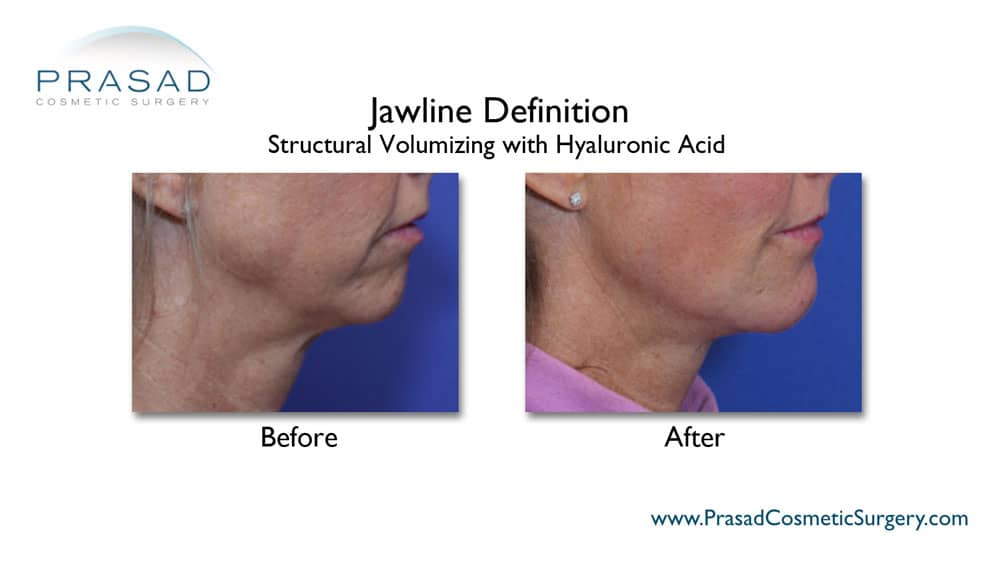
I approach this problem by transferring the surgical principles used to place facial implants to the non-surgical placement of long-lasting hyaluronic acid fillers like Juvederm Ultra Plus and Juvederm Voluma known as Structural Volumizing. This means that I’m precisely injecting hyaluronic acid filler at the bone level to restore and enhance the contour where deficiencies exist. This procedure is routinely performed in my exam room with minimal discomfort, risk of bruising, and time.
Filler in Cheeks to “Lift” Jowls
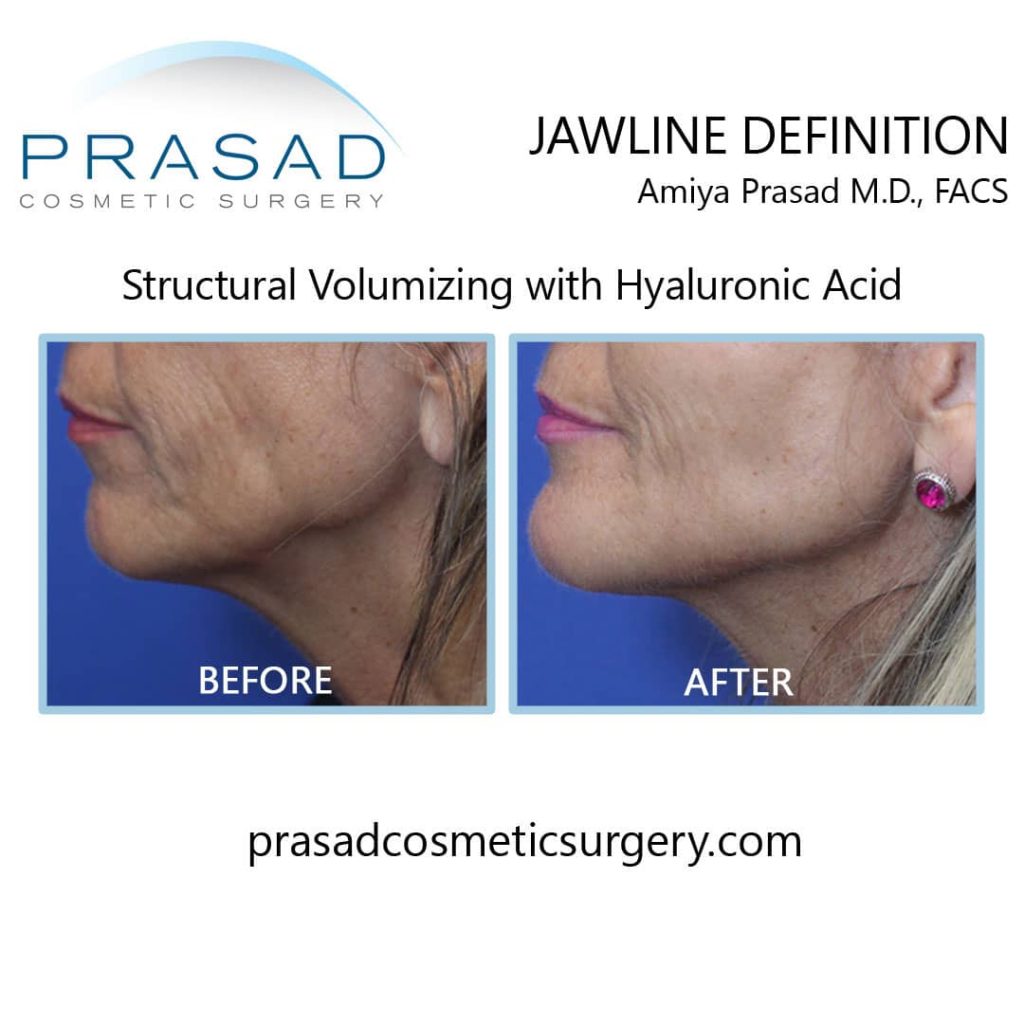
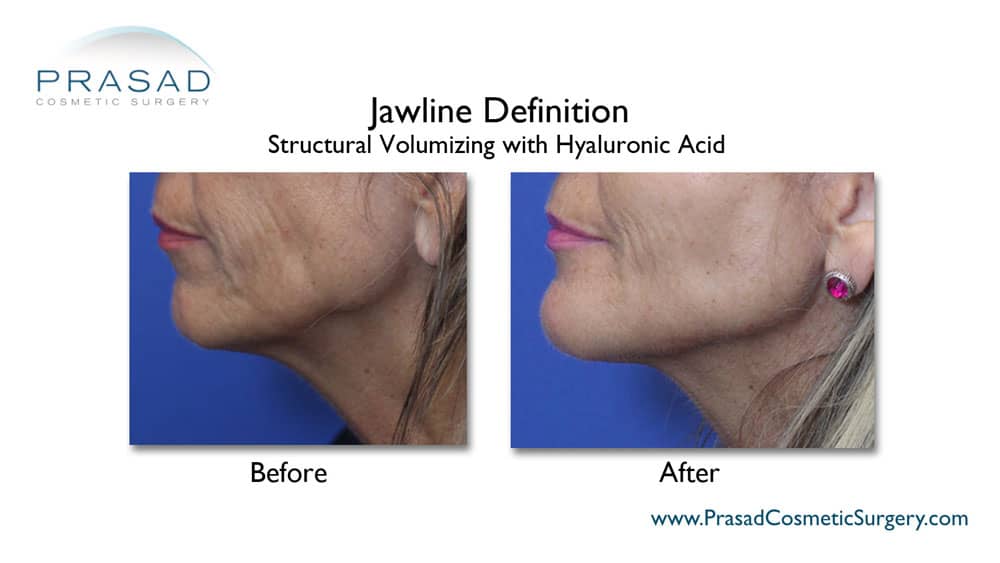
If the anatomic basis for the jowls is fat under the skin, and the skin tone is good, then suction-assisted lipectomy or liposuction is my approach. This procedure takes only a few minutes and is performed under local anesthesia and sedation.
I frequently find that fat below the jawline is accompanied by fat under the chin, so I treat this area as well. This method is both safe and effective. Surprisingly, a bile acid product called deoxycholic acid has been aggressively marketed as a non-surgical option for fat reduction under the chin. My concern is that the procedure necessitates multiple sessions spread out over several months, with significant swelling and inflammation following each session.
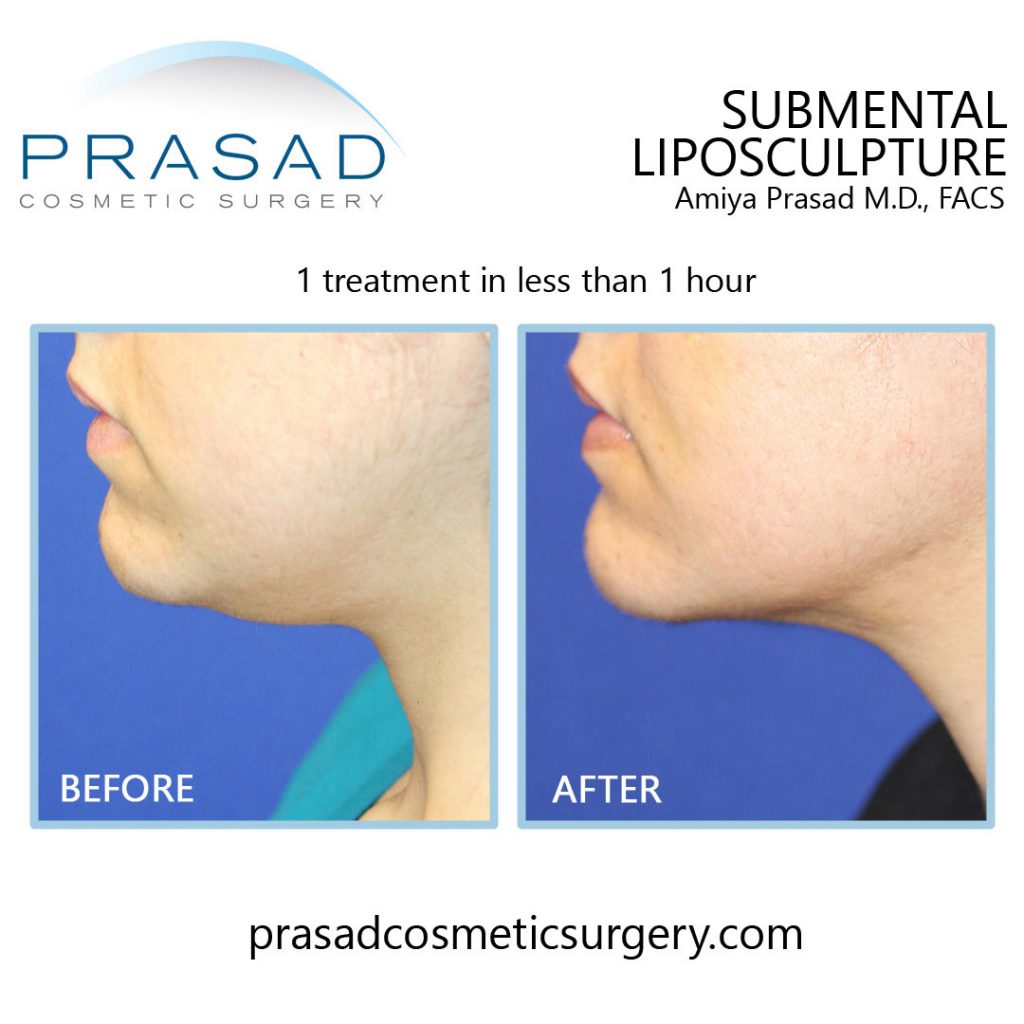
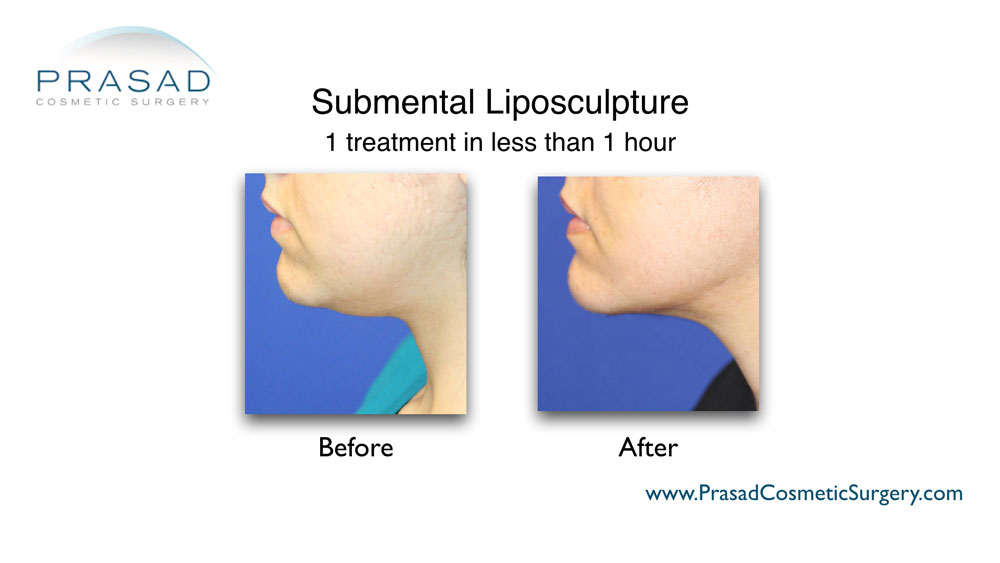
In my opinion, this describes a product which is new, although deoxycholic acid itself is not new, and it has been around for years and is in no way better than what I do with a cannula and a syringe in just a few minutes. The notion that injection is a non-surgical option overlooks the fact that injections into the skin and causing inflammation are more invasive, and require significantly more recovery than my approach.
Buccal Fat Appearing as Jowls
Buccal fat is another fat-related issue that can contribute to the appearance of jowls. Buccal fat is a type of fat structure that is found in the cheeks. As people get older, some of this fat loses volume, and the supporting structures loosen, resulting in the fat creating a bulge adjacent to the jaw, giving them a jowl appearance. This is not fat that can be reduced with liposuction, and I would not use deoxycholic acid to reduce it.
Buccal fat removal before and after
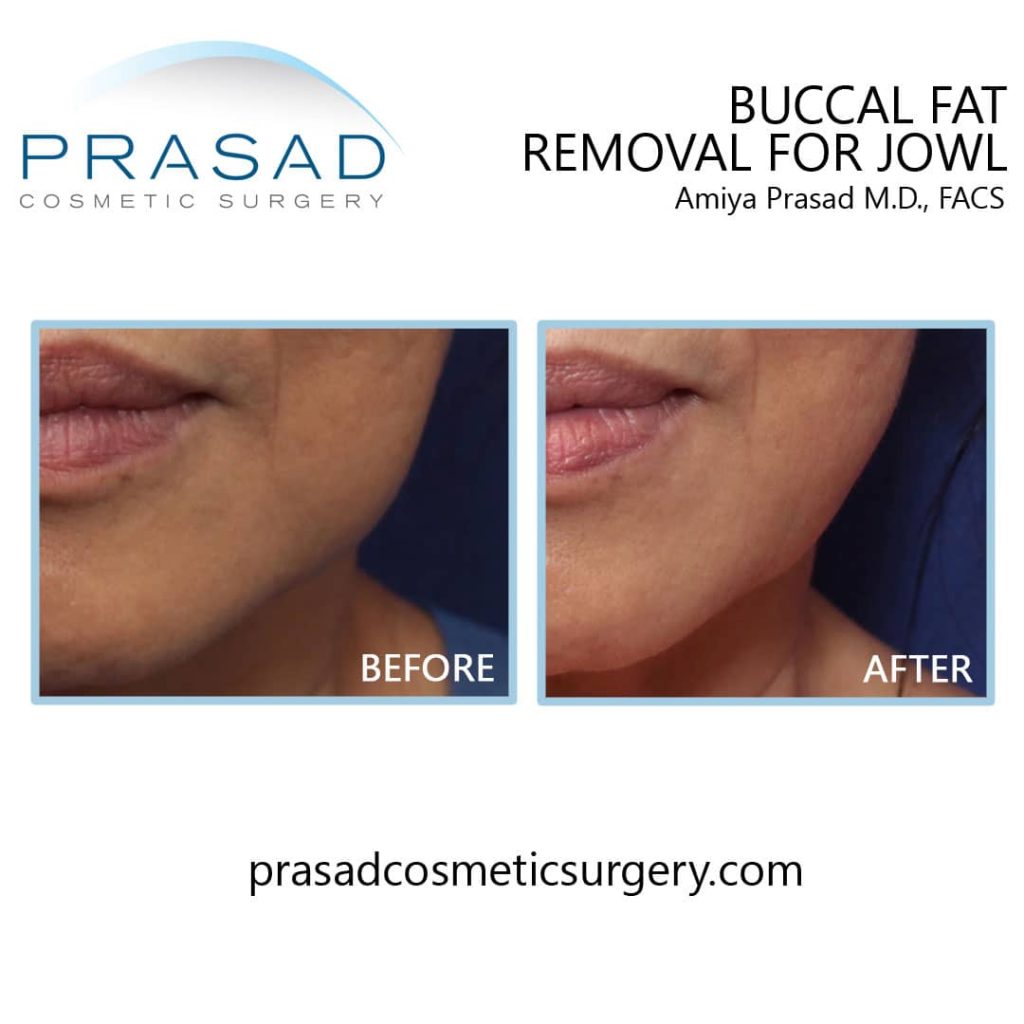
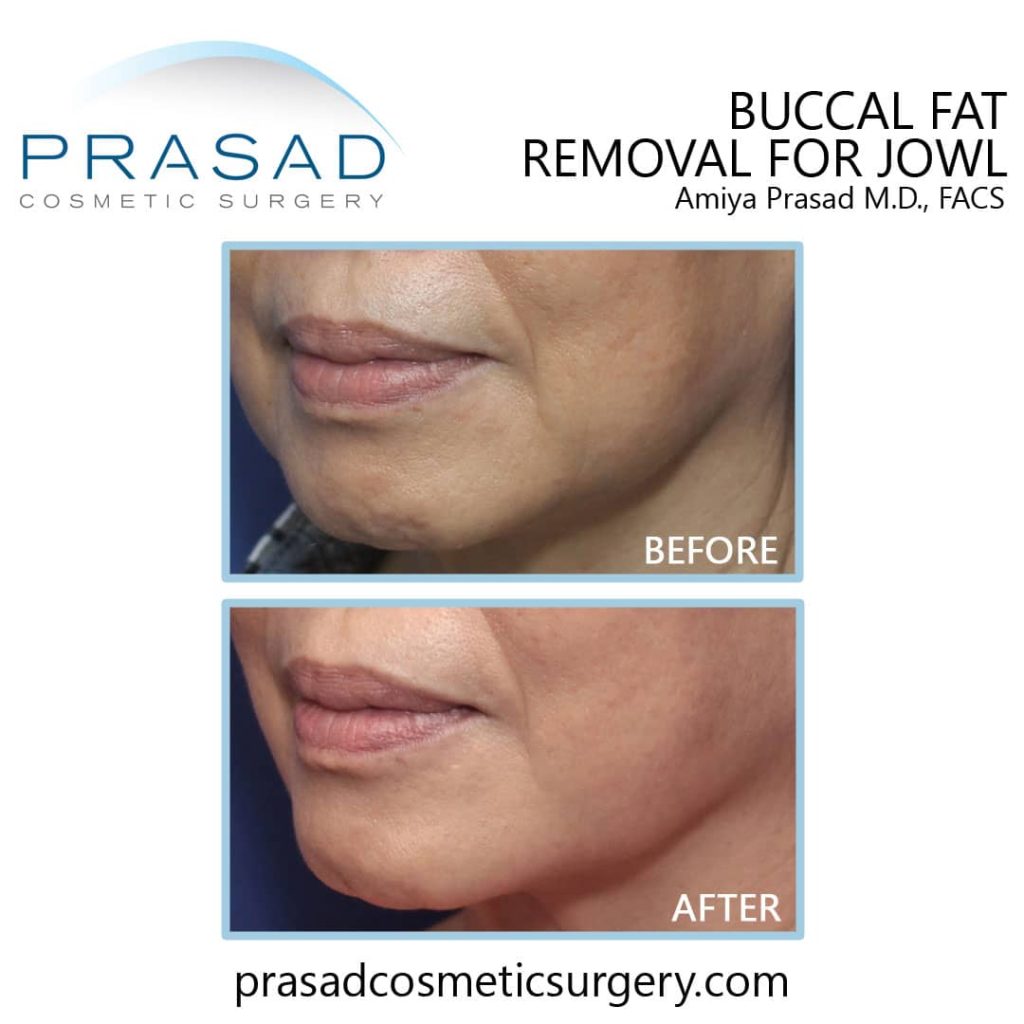
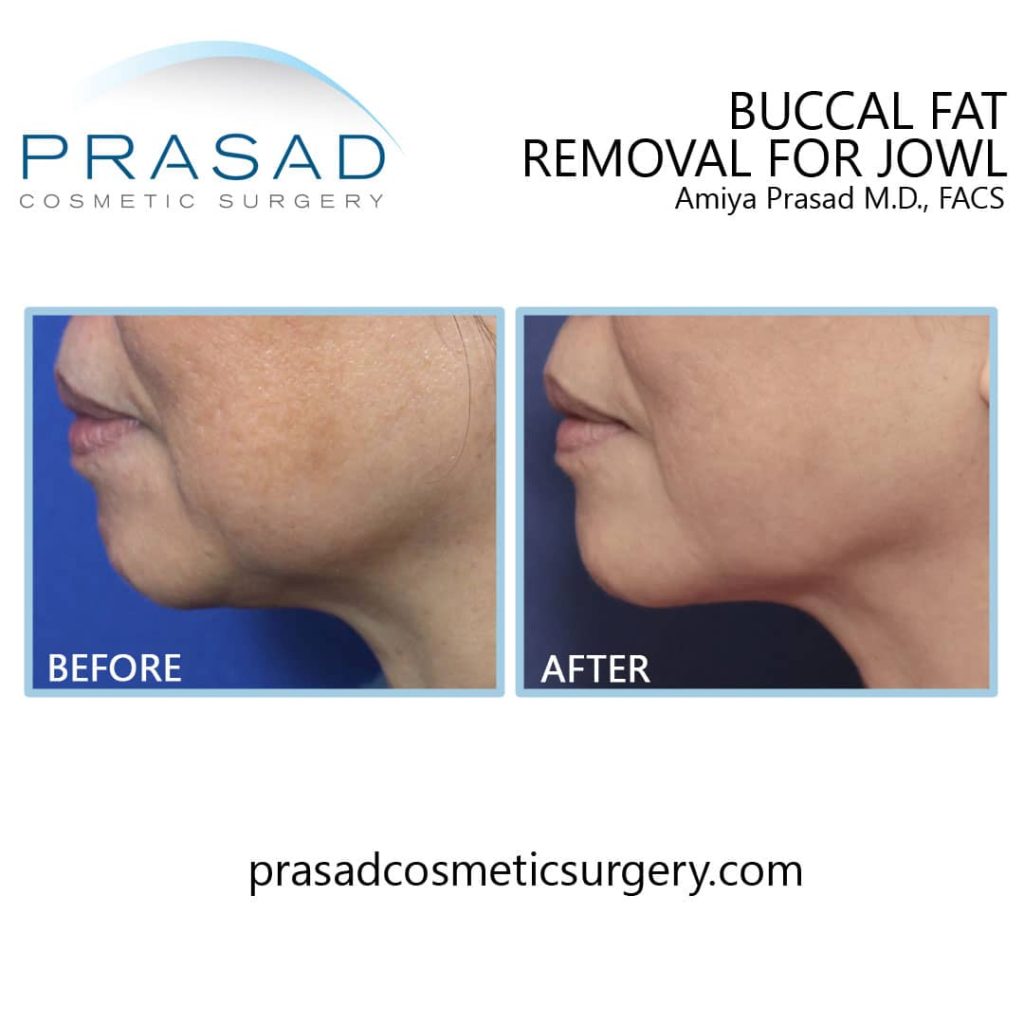
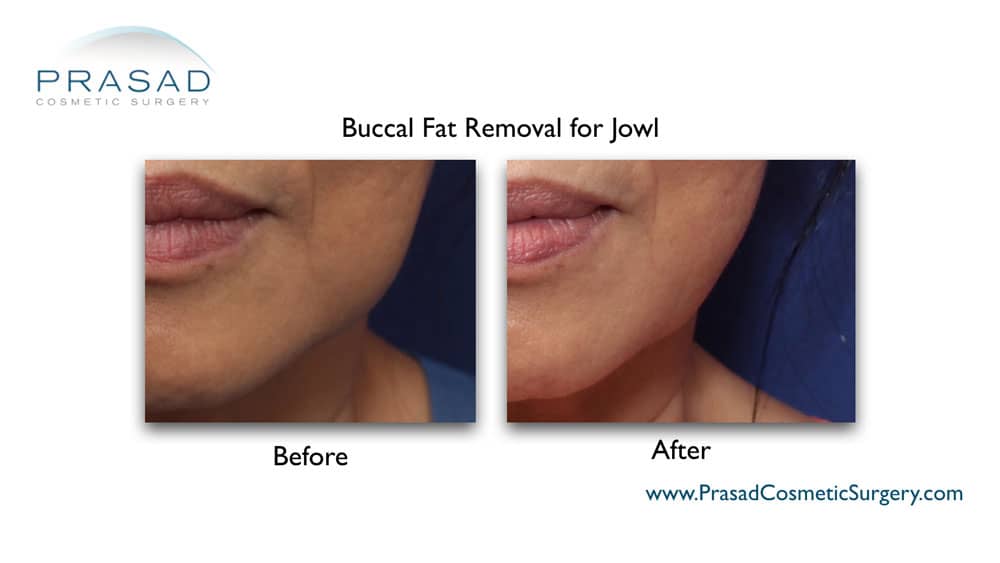
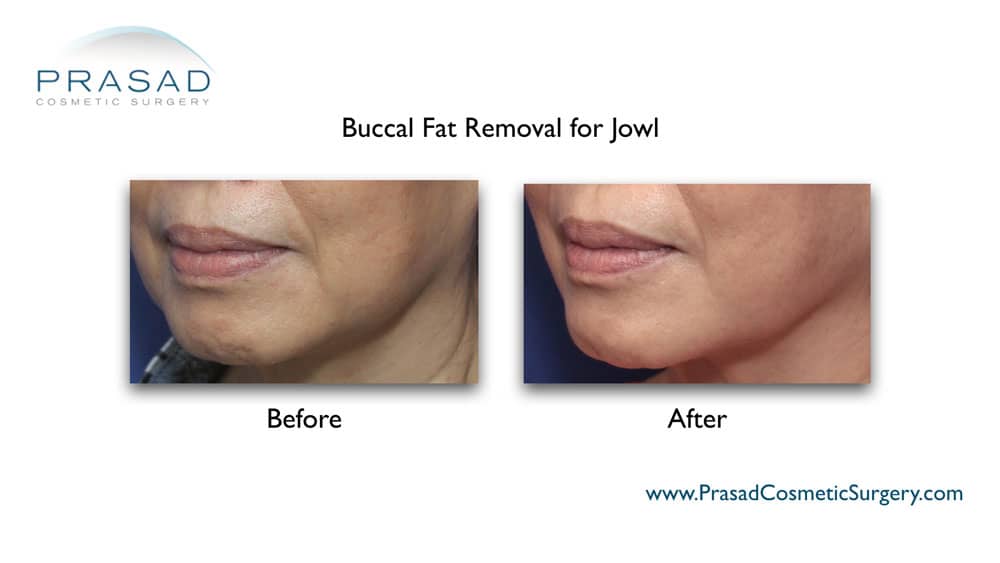
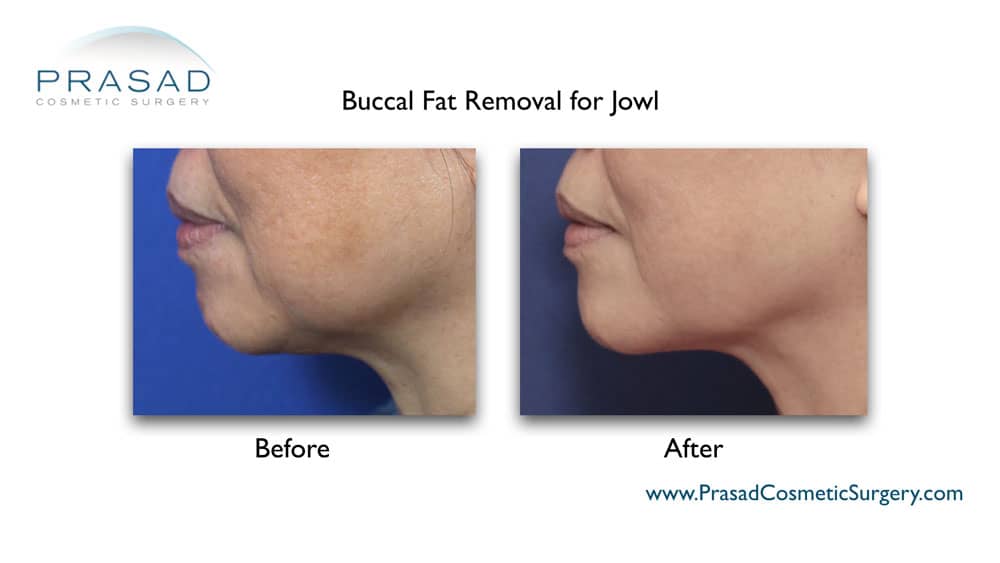
I approach this prolapsed buccal fat from the inside of the mouth, through a small opening inside the cheek. This procedure is routinely performed under local anesthesia with minimal sedation. The advantages of reducing buccal fat can be substantial.
Laser Treatment for Jowls
If there is a jowl with skin laxity, I assess the degree of skin laxity to determine whether you are a candidate for a non-surgical jowl lift using a long pulse 1064 YAG laser, or a surgical facelift procedure. The jowl lift procedure uses a 1064 YAG laser to heat the skin and fat from the outside to a target temperature, which causes fat destruction as well as skin retraction. This procedure is performed in an exam room and takes approximately 15 minutes per session, with 3 to 4 sessions spaced approximately 1 month apart. This procedure is best suited for people with fair skin or whose skin is not too loose.
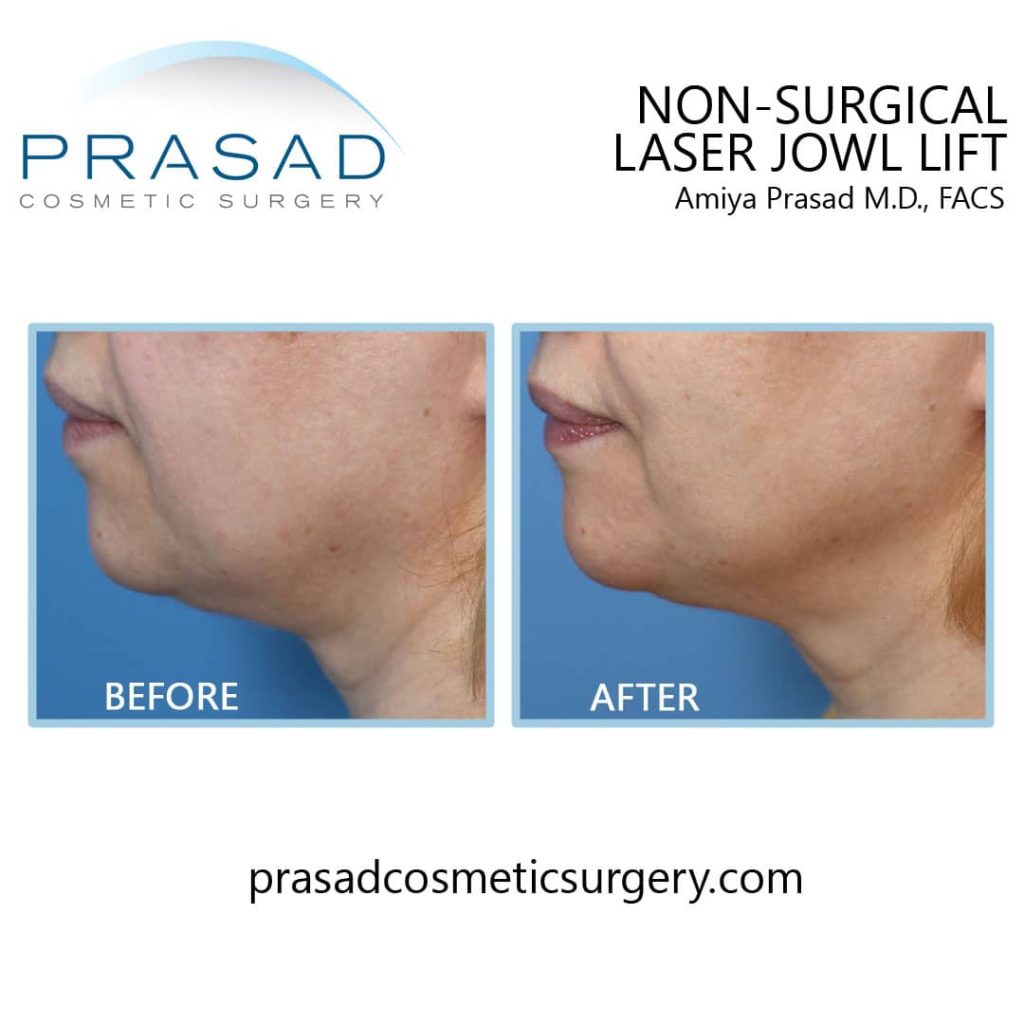
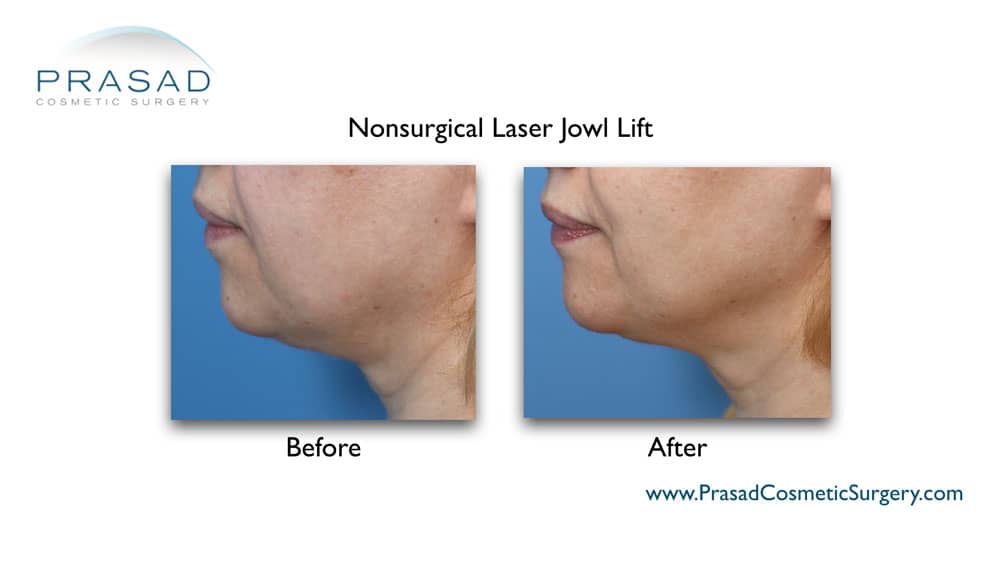
A facelift or face and neck lift procedure is usually recommended when the skin is loose and the jawline is not well defined. This procedure not only lifts sagging skin, but it also addresses the SMAS, or superficial musculoaponeurotic system, which is connected to the facial muscles. This deep tissue is the skin’s foundational support and is frequently referred to when a patient inquires about “tightening the muscle” during a facelift.

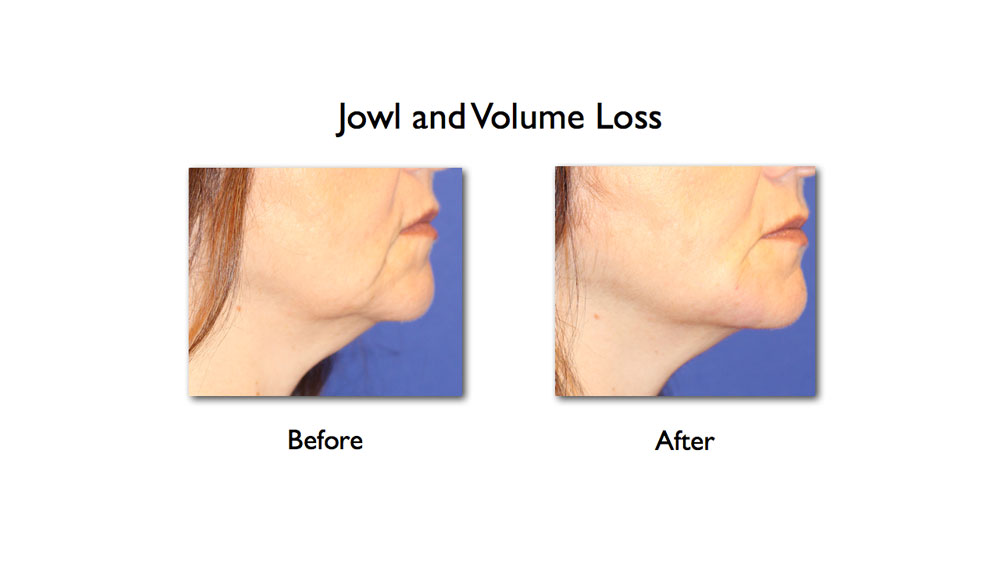
I use local anesthesia and LITE IV sedation to perform face and neck lifting procedures. In addition to avoiding general anesthesia, I employ advanced wound healing technology such as Acellular matrix to promote wound healing. My patients are relaxed during and after surgery, and they can go home with only a light facial dressing.
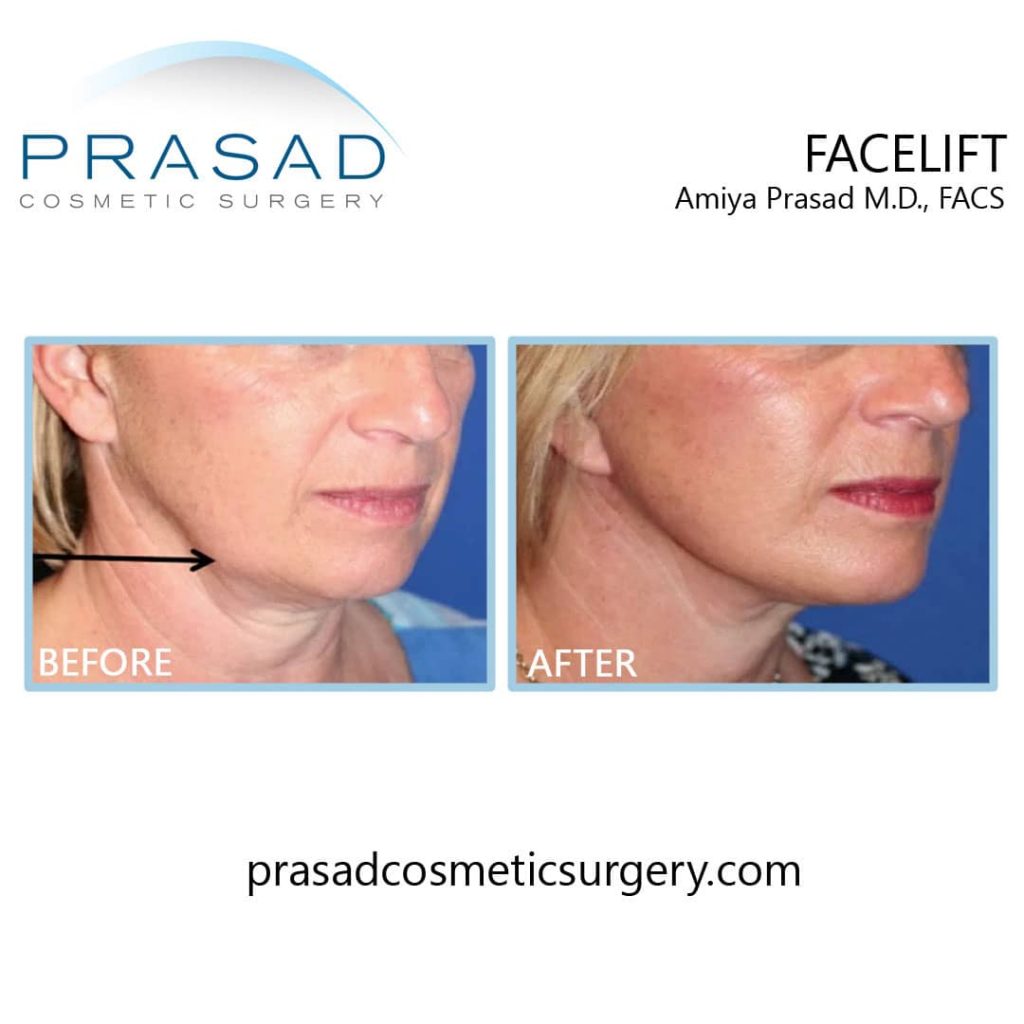
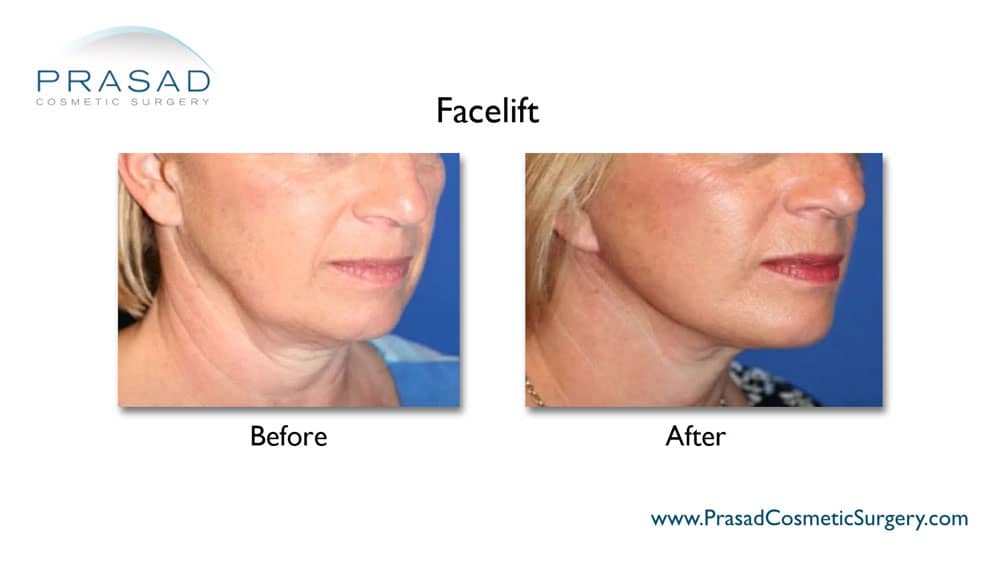
My patients return to work in 1 to 2 weeks with improved jawlines. I always tell my facelift patients that your appearance after facelift surgery is influenced by your underlying bone structure and skin elasticity. Facelift surgery can be thought of as a way to restore the anatomy of sagging tissue. Structural Volumizing can improve your appearance even more by addressing age-related bone volume loss. The appearance of jowls can make it difficult to have a well-defined jawline. People who are considered attractive, regardless of age, have nice facial definition and harmony, which is characterized by well-defined jawlines.
Conclusion
In today’s market, there are numerous skin-level devices and dissolvable threads generating a lot of buzz through aggressive marketing and absurd claims. It is critical to understand the anatomical principles of your situation so that you are not misled by flashy marketing.
I always tell my patients that they must first define the problem before working on a solution. For example, if the appearance of jowls is due to a relative bone deficiency, even a subtle improvement of the jawline through Structural Volumizing can make a significant difference in how you feel about your appearance; and the results are noticeable right away.
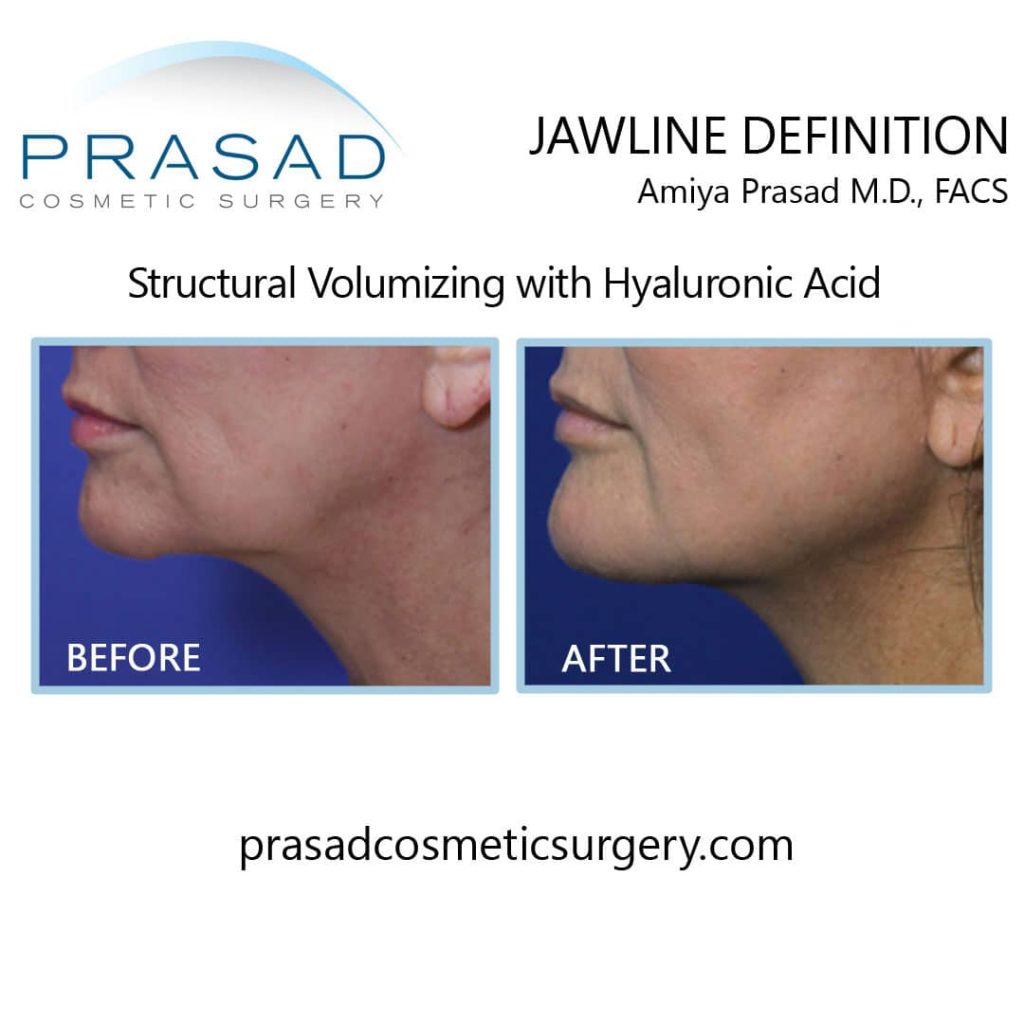
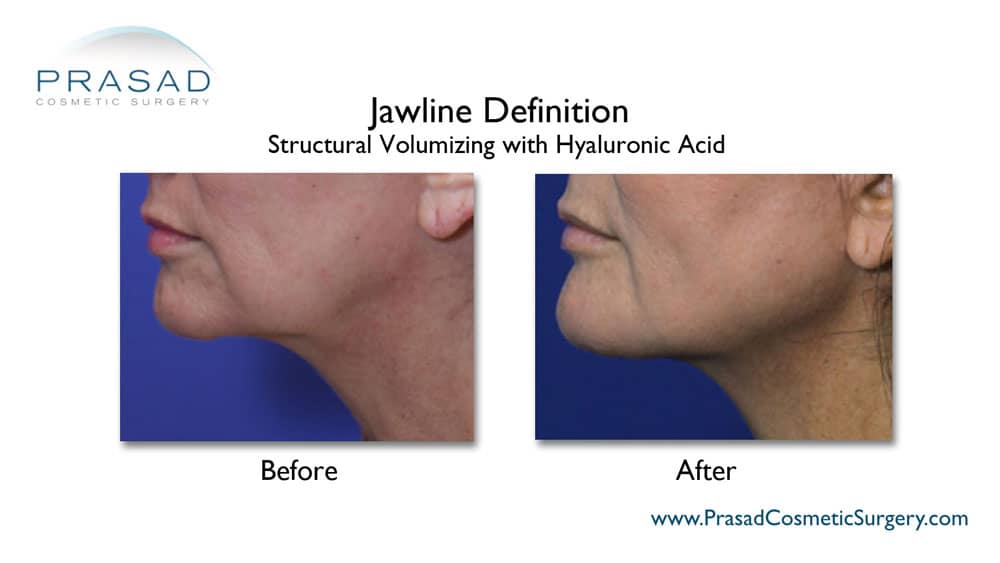
Finally, your facial bone structure, the presence of fat under your skin or in the buccal space, and your skin tone can all be addressed safely and effectively to help you keep your jawline looking its best, at any age.
